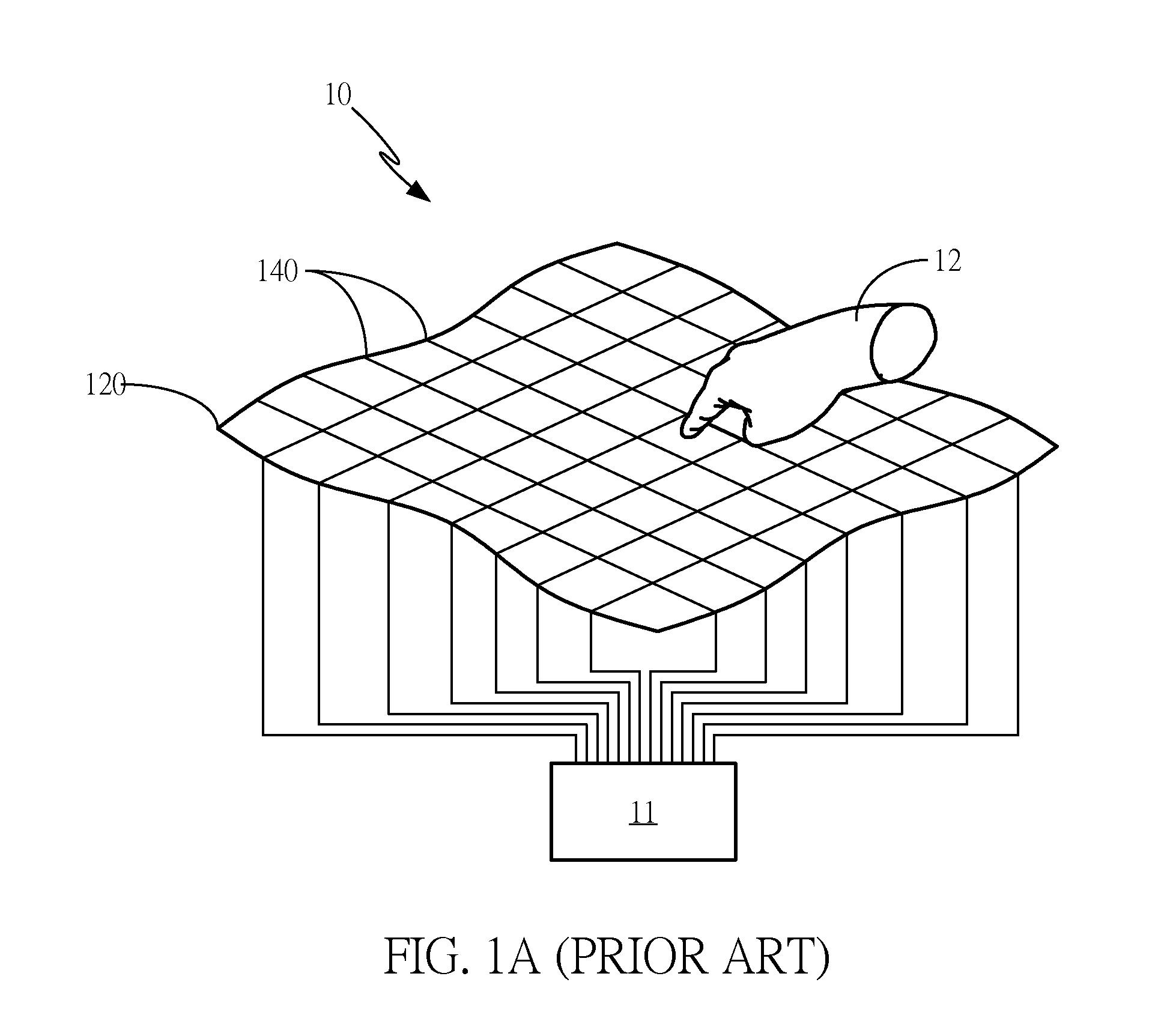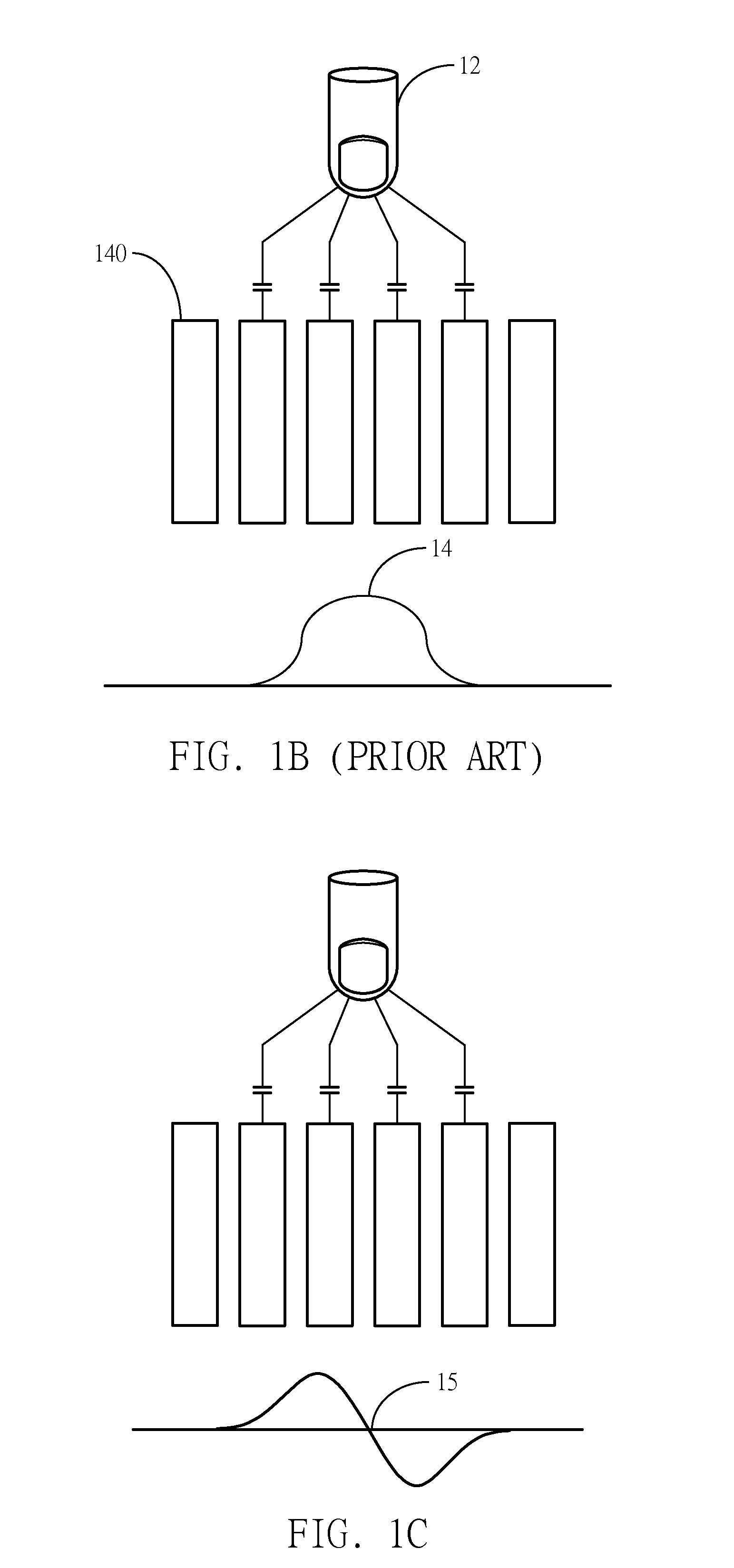Touch sensing method, processor and system
- Summary
- Abstract
- Description
- Claims
- Application Information
AI Technical Summary
Benefits of technology
Problems solved by technology
Method used
Image
Examples
first embodiment
[0137]In the present invention, a method for capacitive position detection is provided as shown in FIG. 6A. First, in step 610, a capacitive sensing device with a plurality of sensors is provided, wherein these sensors include a plurality of first sensors and a plurality of second sensors, and these first and second sensors intersect at a plurality of intersections. Next, in step 620, each touch-related sensor is detected. Next, in step 630, at least a mutual capacitive detection range is determined based on all of the touch-related sensors. Then, in step 640, mutual capacitive detection is carried out on the at least one mutual capacitive detection range to determine sensing information of the at least one mutual capacitive detection range. Then, in step 650, a 2D sensing information is generated based on the sensing information of the at least one mutual capacitive detection range.
[0138]In step 620, the touch-related sensors can be determined by self-capacitive detection. For exam...
second embodiment
[0152]In the present invention, a method for capacitive position detection is provided as shown in FIG. 7A. First, in step 710, a 2D sensing information is obtained. Next, in step 720, at least a 1D sensing information is obtained. Then, in step 730, when the capacitive sensing device is touched or approached, at least a detected range in the 2D sensing information is determined based on the at least 1D sensing information. Thereafter, in step 740, each touch-related sensing information is determined in the at least one detected range.
[0153]The plurality of 1D sensing information above can be obtained by a capacitive sensing device. The capacitive sensing device includes a plurality of sensors. These sensors include a plurality of first sensors and a plurality of second sensors, wherein the first and second sensors intersect at a plurality of intersections. Moreover, steps 710 and 720 above can be performed by the controller 160. In addition, steps 730 and 740 above can be performed...
third embodiment
[0167]In the present invention, an image of signal values is segmented into line pieces based on a predefined condition. This predefined condition may specify a line piece as a plurality of continuous non-zero values, or one or a plurality of continuous values exceeding a threshold.
[0168]In a second embodiment of the present invention, a predefined condition is used for segmenting an image of differences into line pieces. The predefined condition may specify a line piece as a group of continuous positive values with an adjacent group of continuous negative values, wherein there is no zero values between the continuous positive values and the continuous negative values, or there can be at least one zero value. Furthermore, the predefined condition may specify a line piece as beginning with a value greater than a positive threshold and ending with a value smaller than a negative threshold.
[0169]In an example of the present invention, differences are indicated by continuous positive va...
PUM
 Login to View More
Login to View More Abstract
Description
Claims
Application Information
 Login to View More
Login to View More - R&D
- Intellectual Property
- Life Sciences
- Materials
- Tech Scout
- Unparalleled Data Quality
- Higher Quality Content
- 60% Fewer Hallucinations
Browse by: Latest US Patents, China's latest patents, Technical Efficacy Thesaurus, Application Domain, Technology Topic, Popular Technical Reports.
© 2025 PatSnap. All rights reserved.Legal|Privacy policy|Modern Slavery Act Transparency Statement|Sitemap|About US| Contact US: help@patsnap.com



